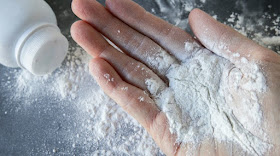Everything from diaper rashes to
feminine hygiene, talcum is one such popular household staple that has found
its place in almost every house. However, talcum powder can be toxic if it’s
inhaled and also linked to cancer lately.
In recent times, safety concerns
arising after thousands of talcum powder cancer cases were filed. Johnsons and
Johnsons in a public statement said that rigorous and third-party testing
confirms there is no such asbestos found after baby powder lawsuits were filed
against them. However, the Food and Drug
Administration previously found tiny amounts of carcinogens.
Dangers Of Asbestos
Asbestos can be found in talc,
considered to be the leading ingredient found in many baby powders, putting
babies, parents and talc miners at the risk of developing deadly cancer.
Asbestos use has become quite
regulated in the United States, though it’s not banned. Miners have more
probability to come in contact with asbestos while talc mining is going on.
There are plenty of talc mines
all across the U.S. including - New York, Texas, Montana and Vermont.
Dangers Of Asbestos Exposure
According to the Centers for
Disease Control and Prevention (CDC), asbestos exposure does not always pose
health dangers, depending upon how much of it you come in contact with.
You may be at high risk of lung
cancer, and mesothelioma.
Asbestos Nation confirms that exposure
to the substance leads to between 12,000 and 15,000 deaths in the US every
year. The legal action comes after these consumers claim using the talcum powder leads to cancer.
Baby Powder And Asbestos
A bunch of reports and lawsuits
have connected the talcum powder in J&J’s baby powder to asbestos. We all
know J&J is the biggest baby powder supplier and considered to be one of
the most trusted brands in the world.
A 2018 report by Reuters sheds
some light on the timeline using the important company documents:
 |
| Is Baby Powder Safe? Know About Asbestos Risks |
Revelations from the
Investigative Report:
- In the year 1957, a small number of asbestos fibers were found in talcum samples from Johnson and Johnson.
- During the mid-1960s, talcum powder from Vermont mines which is owned by Johnson and Johnson is found to be involved with asbestos. Sample tests find small amounts of talcum powder through the 1970s.
- Contrary to reporting all discoveries, J&J only submitted relevant studies to the FDA during the 70s era. Johnson and Johnson focused on studies that went well with its plan and further declared that talcum had no asbestos in the talcum powder.
- Using its influential power, the company came with its own studies in which they told researchers of the expected outcomes.
- The company also tried to influence Government studies by having subsidiary companies act as advisors.
- At present, Johnson and Johnson is going through a lawsuit crisis from almost 12,000 plaintiff who claim that the products lead to cancer.
- Johnson and Johnson debate with the claims found in the Reuters report and plan to plea the decree.
- There are certainly no declarations for Johnson and Johnson’s baby powder comeback.
Health Risks
There might be debates going on
about whether pure talc is a harmful substance when inhaled but there is no
doubt that asbestos is deadly. Mesothelioma is acute cancer caused by
accidental inhalation of microscopic asbestos fibers. When asbestos becomes
airborne, this inhalation may arise from natural breathing.
There are a few alternatives to
talc-based baby powder includes:
- Cornstarch powders
- Baking soda
- Oat flour
- Arrowroot starch
- Zinc based diaper rash creams
This is an unfortunate reality
that something as harmless as baby powder could increase cancer-forming fibers.
If you are also a victim of
asbestos-related disease, it is probably the right time to talk to an
experienced lawyers and discuss the options.


No comments:
Post a Comment
Please Leave a Comment to show some Love ~ Thanks